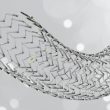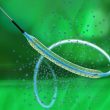Renato Roese Filho, Alan Castro D’Avila, Márcia Moura Schmidt, Alexandre Schaande Quadros, Cristiano de Oliveira Cardoso, André Luiz Langer Manica, Alexandre Damiani Azmus, Júlio Vinicius de Souza Teixeira, Claudio Vasques de Moraes, Henrique Basso Gomes, Carlos Antônio Mascia Gottschall, Rogério Sarmento-Leite
Mechanisms of Very Late DES Thrombosis by OCT
Original Title: Mechanisms of Very Late Drug-Eluting Stent Thrombosis Assessed by Optical Coherence Tomography. Reference: Masanori Taniwaki et al. Circulation. 2016 Feb 16;133(7):650-60. The physiopathological mechanisms behind DES thrombosis have not been fully described yet. The potential causes behind this adverse event were assessed using optical computed tomography (OCT). Between August 2010 and December 2014,...
DES in critical ischemia caused by infrapopliteal lesions
Original Title: Percutaneous Transluminal Angioplasty and Drug-Eluting Stents for Infrapopliteal Lesions in Critical Limb Ischemia (PADI) Trial. Reference: Marlon I. Spreen et al. Circ Cardiovasc Interv. 2016 Feb;9(2):e002376. The treatment of infrapopliteal lesions in patients with critical limb ischemia is limited by the high rates of restenosis. The most frequent course of treatment is...
Diabetes has higher impact on DES outcomes than disease complexity
Original Title: Impact of diabetic status on outcomes after revascularization with drug-eluting stents in relation to coronary artery disease complexity. Reference: Koskinas KC et al. Circ Cardiovasc Intv. 2016; Epub ahead of print Diabetic patients ongoing PCI with drug eluting stents (DES) are at higher risk of repeat revascularization than non-diabetic patients. According to this...
SORT OUT IV at 5 years: second generation DES efficacy confirmed
Original Title: Safety and efficacy of everolimus-versus sirolimus-eluting stents: 5-Year results from SORT OUT IV. Reference: Jensen LO et al. J Am Coll Cardiol. 2016;67:751-762. Reassuring long term outcomes from SORT OUT IV confirm the safety and efficacy of second generation everolimus eluting stents (EES) over first generation DES. The difference at 5-year follow up...
In saphenous vein graft lesions, 1st and 2nd generation DES have similar outcomes
Long-Term Outcomes with First vs. Second-Generation Drug-Eluting Stents in Saphenous Vein Graft Lesions. Nagendra R. Pokala. Catheterization and cardiovascular Intervention 2016;87:34-40 Courtesy of del Dr. Carlos Fava. Second generation DES have been proved superior to first generation DES in native arteries, but there is limited information on DES in saphenous vein grafts (SVG), from a...
Drug eluting balloon vs. second generation DES for restenotic lesions in bifurcations
Original Title: Drug-eluting balloon versus second-generation drug-eluting stent for the treatment of restenotic lesions involving coronary bifurcations. Reference: Toru Naganuma et al. EuroIntervention 2016;11:989-995 Courtesy of del Dr. Santiago F. Coroleu. PCI involving in-stent restenosis (ISR), especially in coronary bifurcations, is associated with high rates of recurrent restenosis and the need for new revascularization. Although drug...
ADAPT-DES: Proton Pump Inhibitors and Clopidogrel in Patients with DES
Original Title: Proton Pump Inhibitors, Platelet Reactivity, and Cardiovascular Outcomes After Drug-Eluting Stents in Clopidogrel-Treated Patients. The ADAPT-DES Study. Some proton pump inhibitors interfere with clopidogrel metabolism and could attenuate P2Y12 reception. Prior observational and randomized studies have reported contradicting results on the clinical significance of this drug interaction. The aim of this trial was...
IVUS-XPL: IVUS superior to angiography for guiding DES implantation in long lesions
Original Title: Effect of intravascular ultrasound-guided vs angiography-guided everolimus-eluting stent implantation: the IVUS-XPL randomized clinical trial. Presenter: Hong S-J. Patients with long coronary lesions have better clinical results after a year of second generation DES implantation when interventions are guided by IVUS, instead of angiography. The benefit was attributed to a lower revascularization rate of ischemia...
Meta-analysis of prolonged DAT after DES
Extending the antiaggregation therapy over a year reduces adverse events in patients with a history of AMI, according to this meta-analysis simultaneously published in the European Heart Journal. They analyzed data from 33.435 patients (mean age 64; 24% women) with a history of infarction included in one of the following clinical trials: CHARISMA, PRODIGY, ARCTIC-Interruption,...








